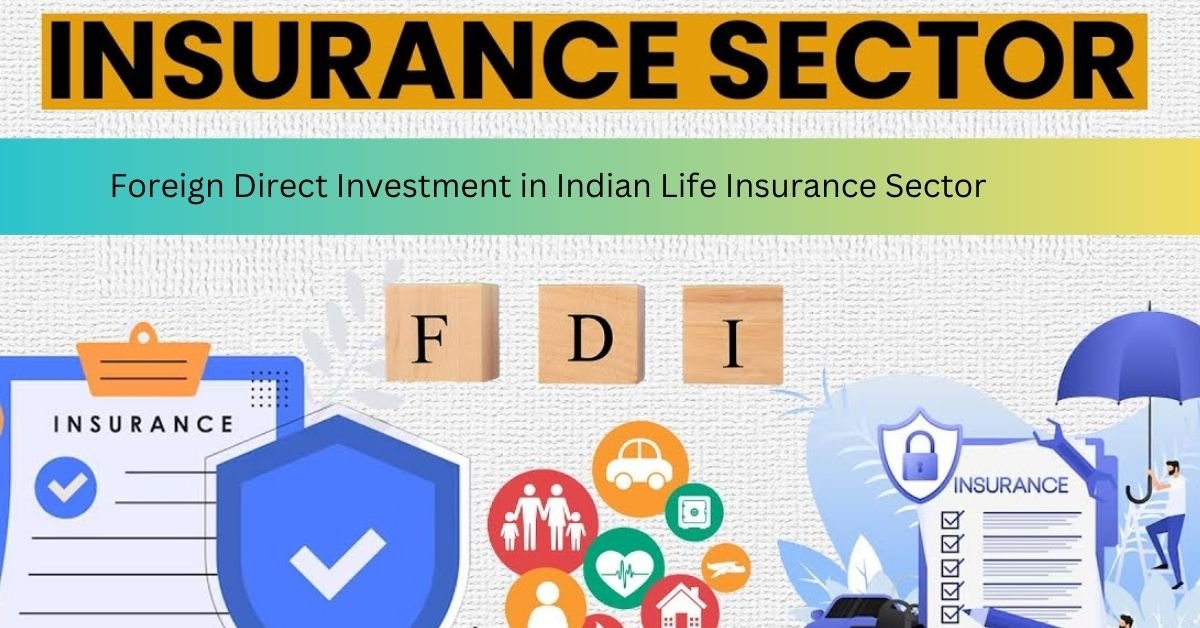FDI in Indian Life Insurance Sector: Since 2020 the Indian life insurance industry has received more than $5.3 billion of foreign direct investment. An evaluation of how recent global investments into India’s “insurance for all” goal transform policies as well as increase premiums and profits and their effects on your situation.
Why FDI in Indian Life Insurance is a Game-Changer 💡
An influx of Foreign Direct Investment brings more than financial resources since it enables businesses to develop new ideas while promoting business rivalry and opening markets to diverse customers. The Indian life insurance market targets a $200 billion milestone in 2027 (IBEF) so major global players such as Prudential PLC and AIA Group make strategic double investments. But how did we get here?
From 26% to 74%: How India Opened Its Insurance Doors 🔓
The Indian government raised annual FDI limits in insurance policies from 49% to 74% during 2021 to enable foreign corporations to secure controlling positions. Insurance Regulatory and Development Authority through its backing approved this progressive policy measure which aims to achieve:
- Boost sector liquidity 💰
- Improve product diversity (think customizable health plans, micro-insurance)
- Enhance tech adoption (AI-driven claims, chatbots)
Expert Insight:
The decision to increase foreign direct investment limits provides insurance coverage to a population demonstrating low life insurance enrollment of 3.7 percent. —Subhash Chandra Khuntia, Former IRDAI Chairman
FDI Success Stories: HDFC Life, ICICI Prudential & More 🌟
- The Joint Venture of HDFC Life + Standard Life Aberdeen achieved a 21% increase in premium income from the prior year (YOY) (2022).
- Initially established as joint venture life insurers with Prudential PLC the company introduced unit-linked plans (ULIPs) which presently form 40% of their products.
Stat Alert: Private insurers (with FDI) control 68% of India’s life insurance market (Economic Times 2023).
Challenges: The Flip Side of FDI ⚠️
- Cultural Misalignment: Global giants often struggle with India’s price-sensitive rural markets.
- Regulatory Hurdles: Compliance with IRDAI’s solvency norms and data localization laws.
- Profit Repatriation: Critics argue 74% FDI could drain profits overseas.
The Future: Tech, Trust, and Tier-2 Cities 🚀
Policybazaar stands as an insurtech startup that employs FDI-financed Artificial Intelligence tools to target customers in Tier-2 areas. The insurance penetration will likely reach 6% in 2030 according to IRDAI predictions due to:
- Hyper-personalized products (e.g., pay-as-you-go crop insurance)
- Digital onboarding (5-minute policy purchases via WhatsApp)
Your Take: Is FDI a Win-Win? 💬
FDI introduces both financial resources and specialised knowledge yet businesses need to solve local requirements with multinational operations. Foreign players can thoroughly grasp India’s wide range of risks.
The FDI wave in India’s life insurance sector is unstoppable—but its success hinges on collaboration, innovation, and inclusive growth. Share this article to spark a debate, and follow @financialdost for more insights! 💬📈
Braj Verma is a resident of Rajgarh in Madhya Pradesh and is a content writer and freelancer by profession. He has a degree in Political Science from Barkatullah University, Bhopal. He has expertise in subjects like credit cards, banking, loan, insurance, political analysis and digital marketing.

